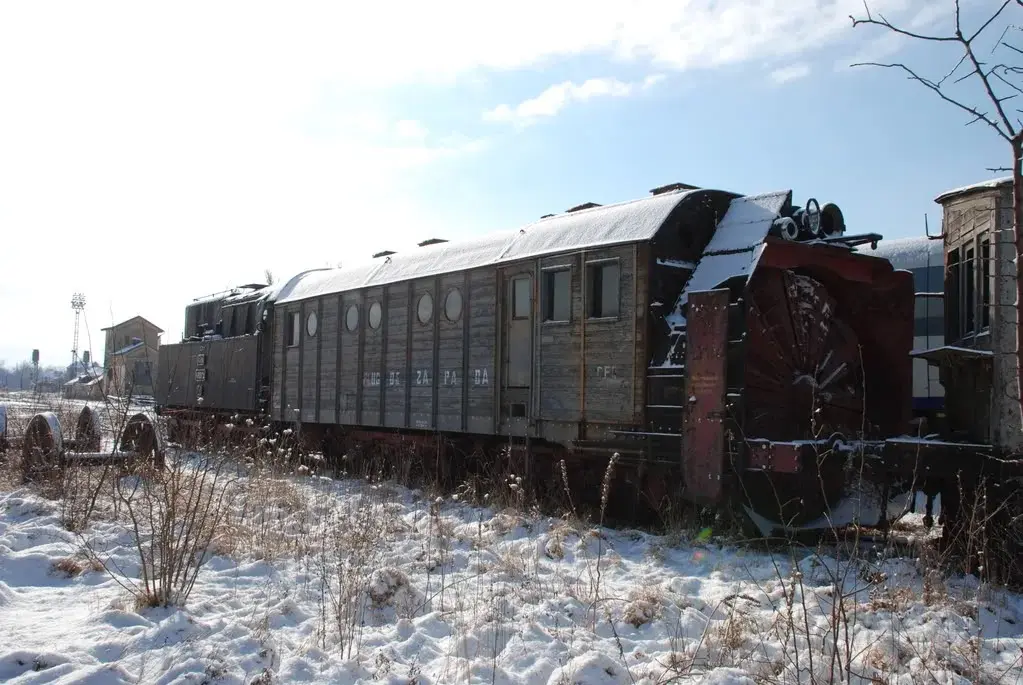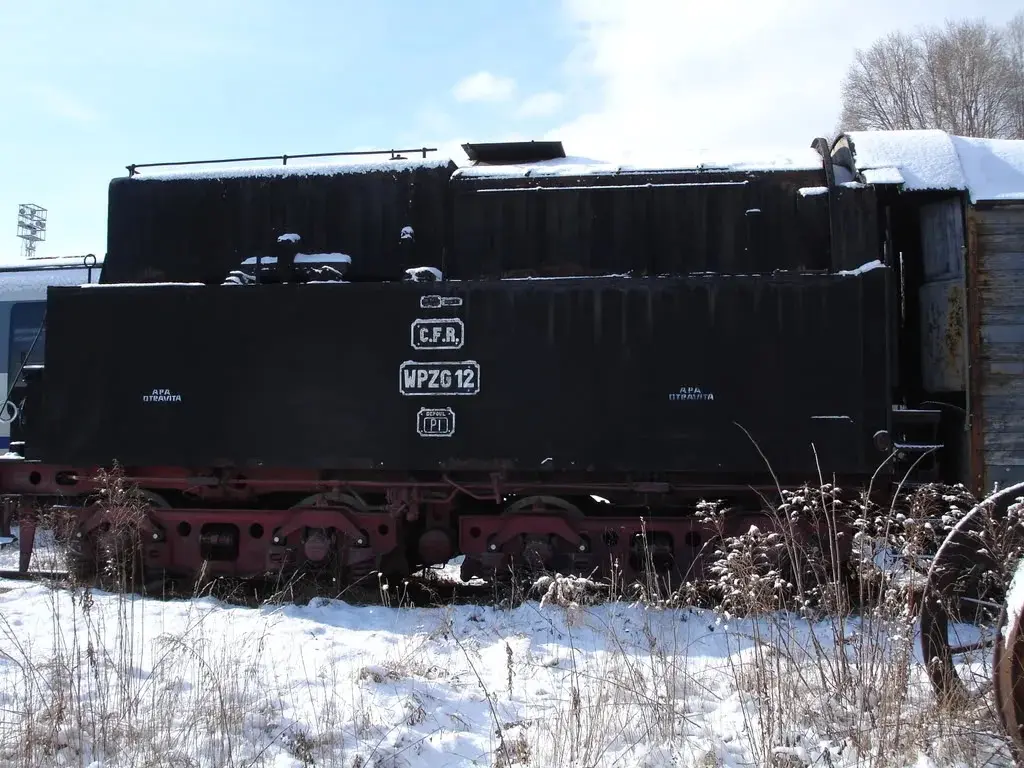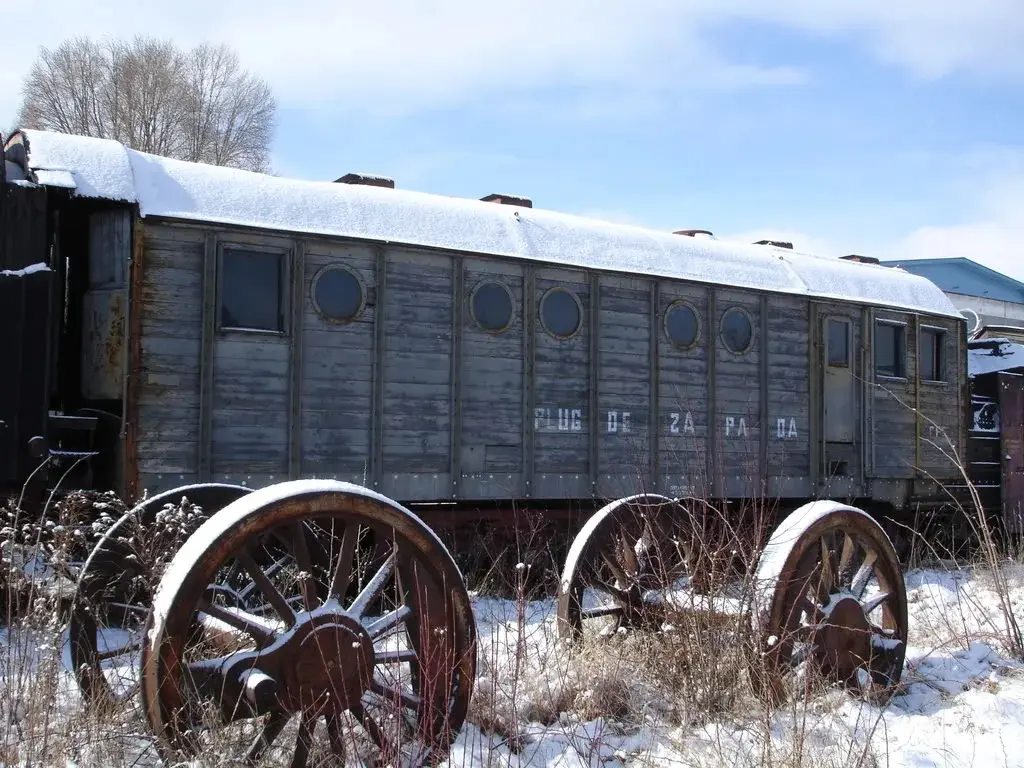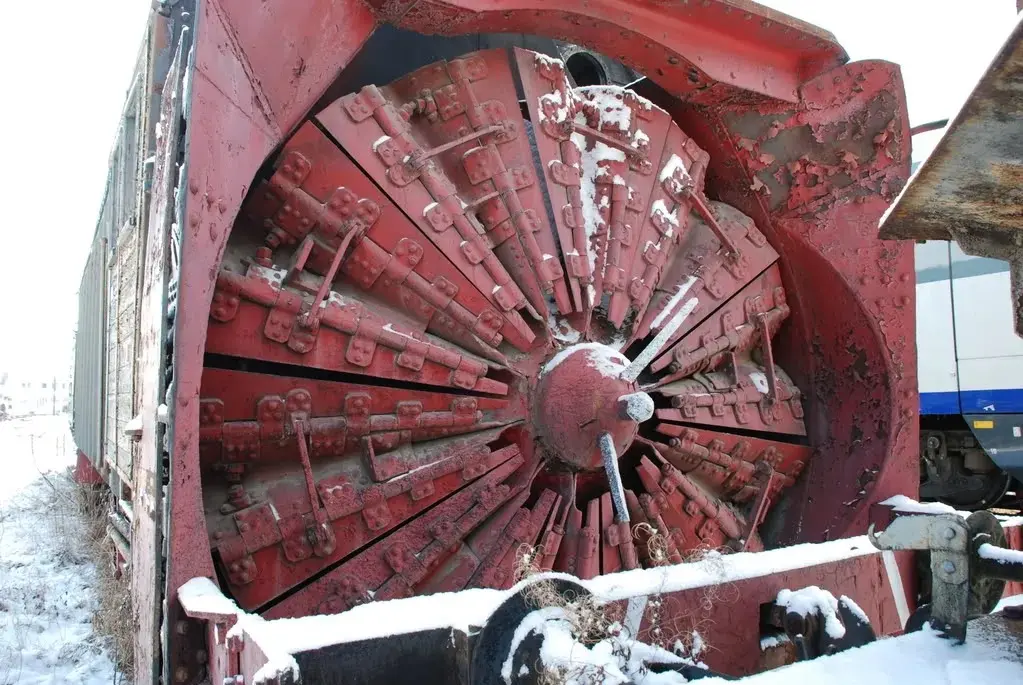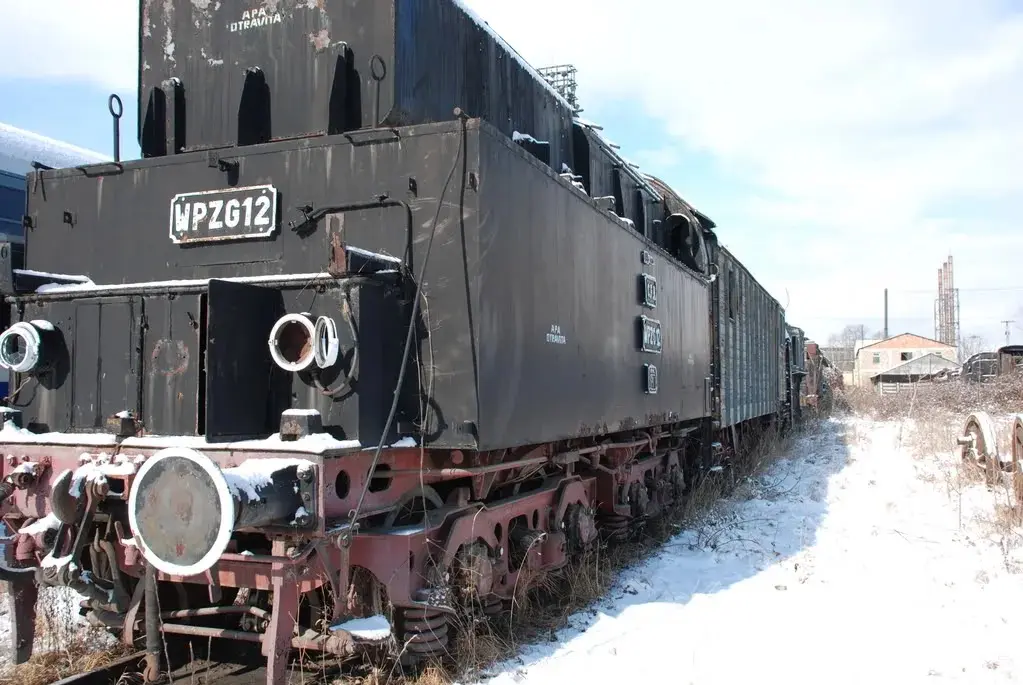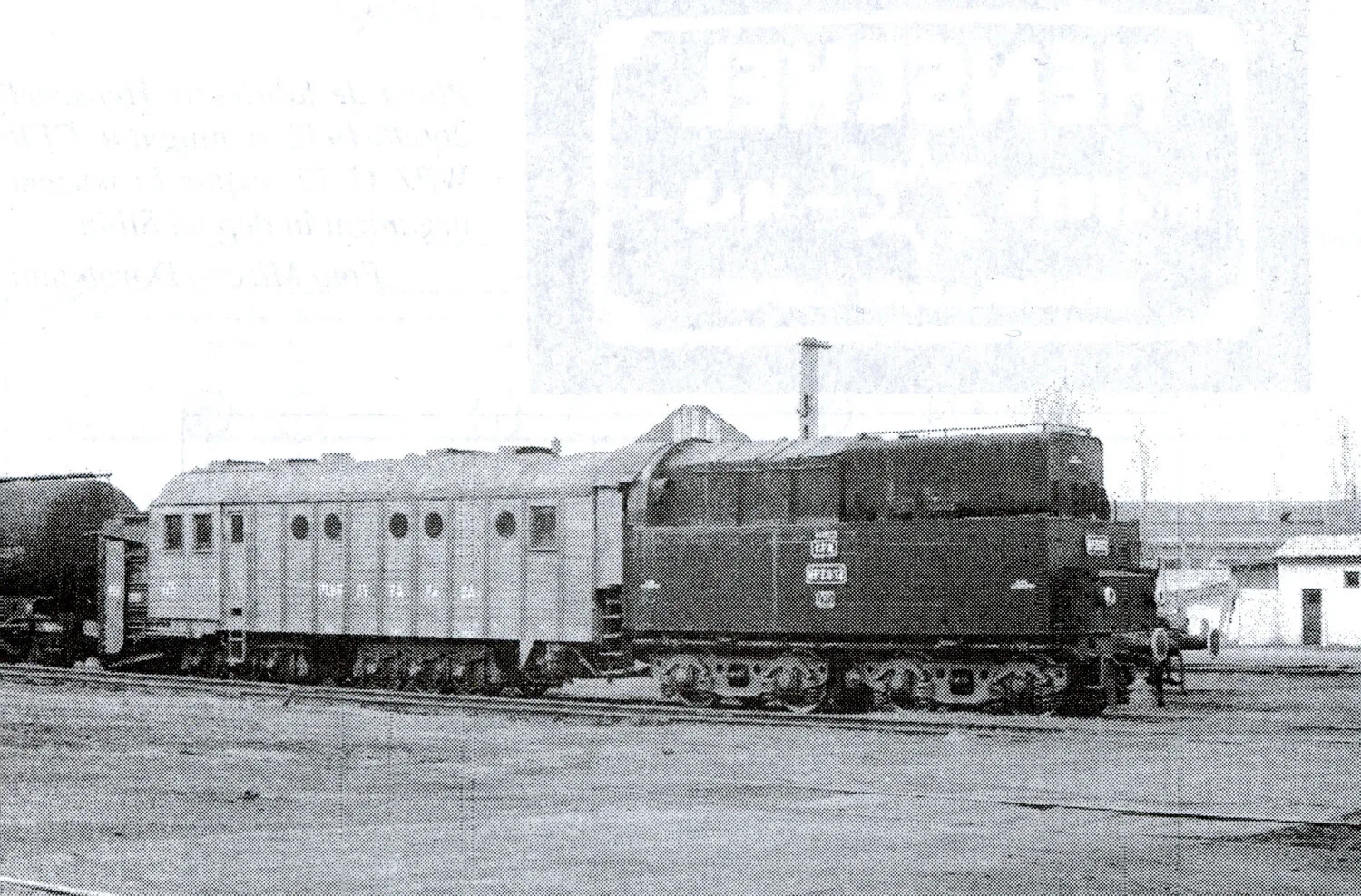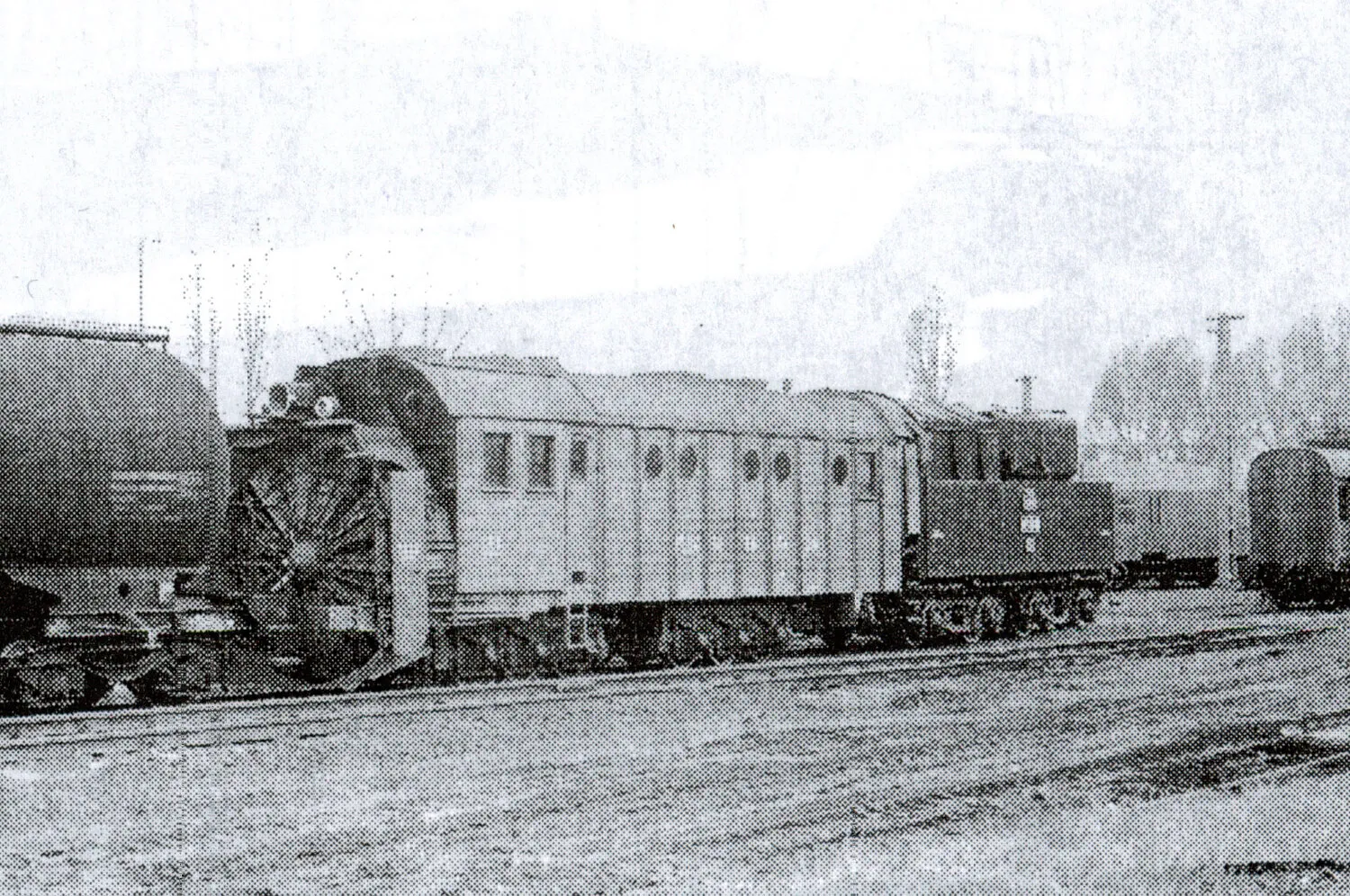WPZ G 11 - G 14
Vehicle type:
Registration country:
Railway companies:
1942
These steam snow blowers entered the CFR fleet in 1942. They were
4x German war-type snow blowers, built by Henschel & Sohn in Kassel
specifically to meet the demands of the front.
The Henschel blowers were equipped with two bogies, each with three axles, designed to reduce the maximum axle load and allow the plows to operate on tracks with weaker infrastructure. They were delivered from the factory coupled with a type 2’2 T 26 tender (similar to those used with DR 50 locomotives and some DR 52 types). The bogie wheels had a diameter of 850 mm, the plow wheelbase was 4550 mm, and the total length of the plow coupled with the tender was 22,280 mm. The steam engine, built under a Schichau-Elbing license, had four cylinders and could drive a 2900 mm diameter propeller at speeds between 120 and 160 rpm. The plow’s empty weight was 60.9 tf, resulting in a maximum axle load of 10.3 to 12.0 tf, and the service weight was 73.2 tf.
As Romania was a key ally of Germany during World War II, CFR received four steam snowplows from Henschel, with factory numbers 26694/1942 - 26697/1942. Delivered to Romania in December 1942 and registered with DRB numbers DRB 700 581, DRB 701 676, DRB 705 303 and DRB 730 602, the blowers were initially assigned to the Bucharest Triaj depot. These are later renumbered WPZ G 11 - G 14.
In the 1970s, they were distributed as follows: WPZ G 11 at the Buzău depot, WPZ G 12 at the Ploiești depot, WPZ G 13 at the Medgidia depot, and WPZ G 14 at the Craiova depot.
Of these, WPZ G 11 is preserved as a museum exhibit at the Buzău depot, WPZ G 12 at the Sibiu depot, and WPZ G 14 at the Craiova CFR station.
The Henschel blowers were equipped with two bogies, each with three axles, designed to reduce the maximum axle load and allow the plows to operate on tracks with weaker infrastructure. They were delivered from the factory coupled with a type 2’2 T 26 tender (similar to those used with DR 50 locomotives and some DR 52 types). The bogie wheels had a diameter of 850 mm, the plow wheelbase was 4550 mm, and the total length of the plow coupled with the tender was 22,280 mm. The steam engine, built under a Schichau-Elbing license, had four cylinders and could drive a 2900 mm diameter propeller at speeds between 120 and 160 rpm. The plow’s empty weight was 60.9 tf, resulting in a maximum axle load of 10.3 to 12.0 tf, and the service weight was 73.2 tf.
As Romania was a key ally of Germany during World War II, CFR received four steam snowplows from Henschel, with factory numbers 26694/1942 - 26697/1942. Delivered to Romania in December 1942 and registered with DRB numbers DRB 700 581, DRB 701 676, DRB 705 303 and DRB 730 602, the blowers were initially assigned to the Bucharest Triaj depot. These are later renumbered WPZ G 11 - G 14.
In the 1970s, they were distributed as follows: WPZ G 11 at the Buzău depot, WPZ G 12 at the Ploiești depot, WPZ G 13 at the Medgidia depot, and WPZ G 14 at the Craiova depot.
Of these, WPZ G 11 is preserved as a museum exhibit at the Buzău depot, WPZ G 12 at the Sibiu depot, and WPZ G 14 at the Craiova CFR station.
Do you have additional informations regarding this vehicle?
Help us writing the history of WPZ G 11 - G 14! Your knowledge is precious for us and the entire community, do not hesitate to share your facts, photos or videos:
Latest update on the 8th of November 2024 at 23:18
Contributor(s): Tudor C.
Discussion forum

